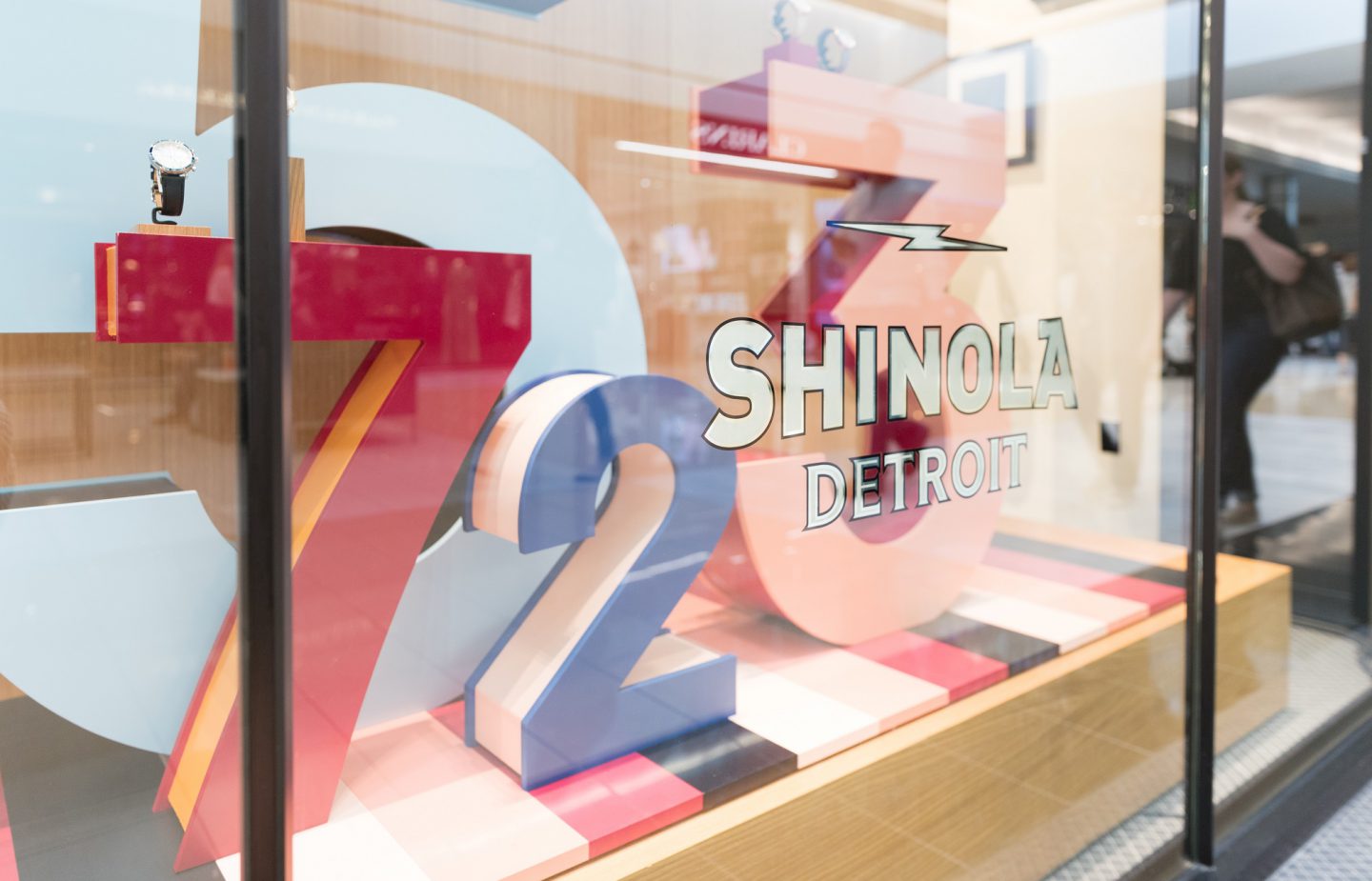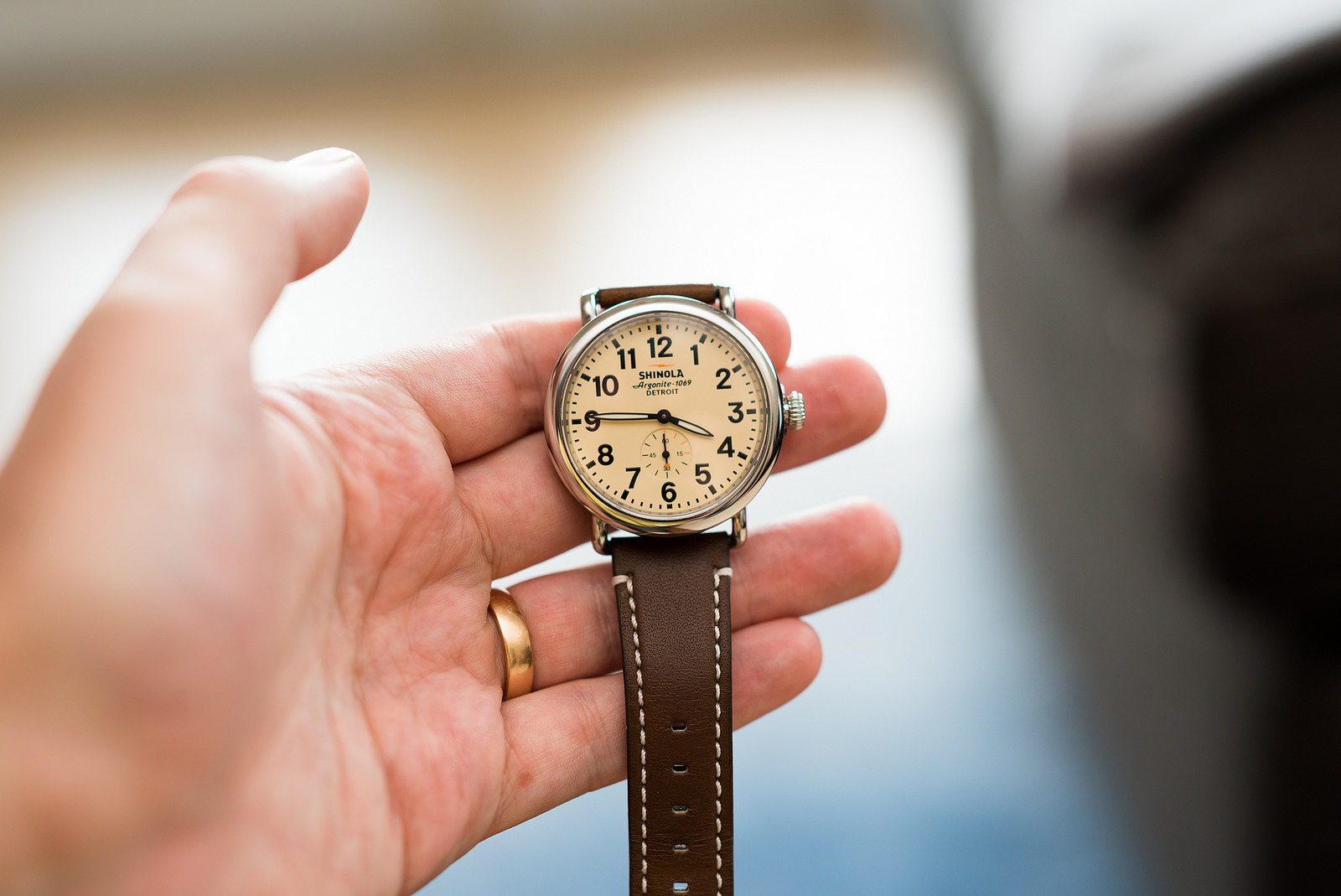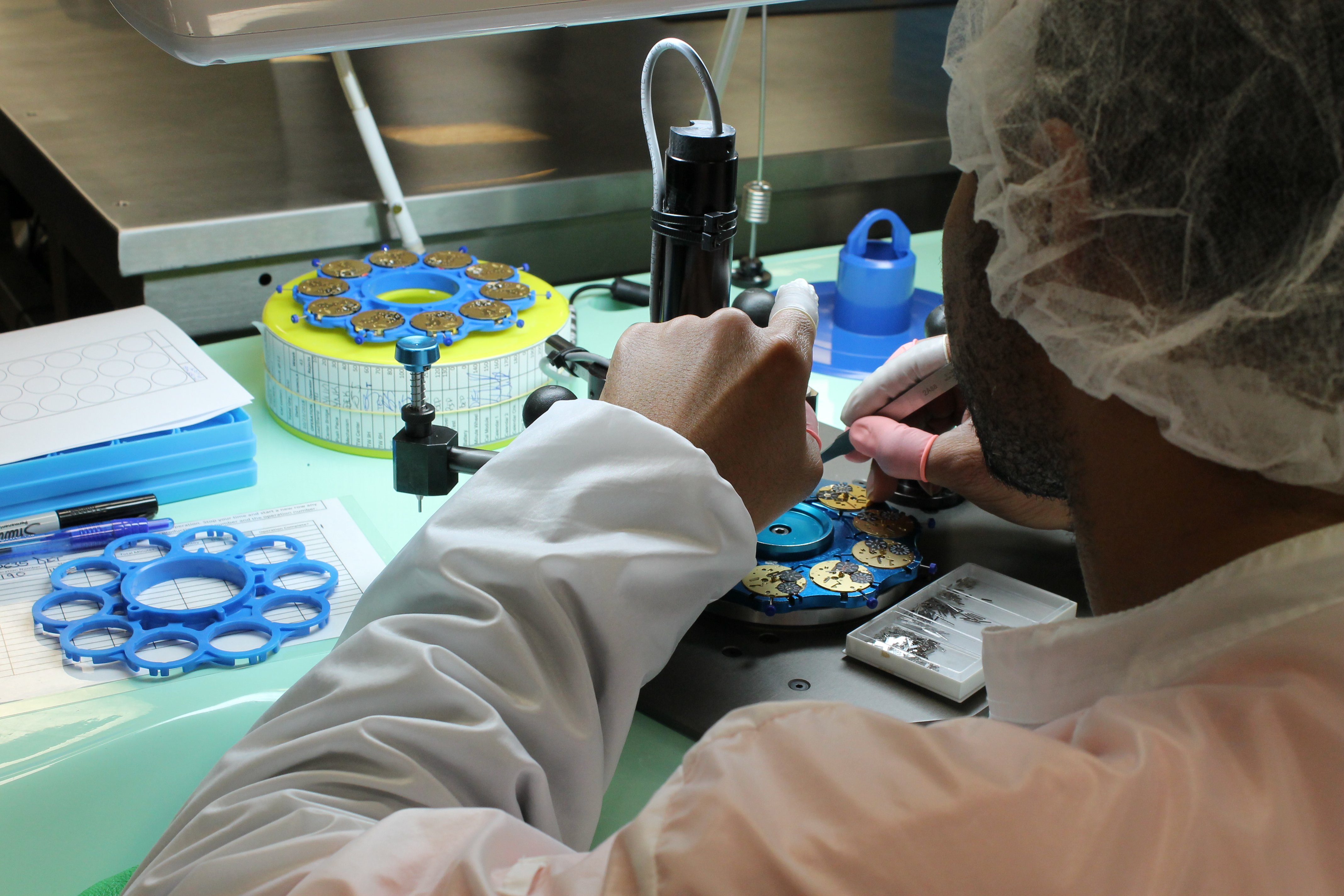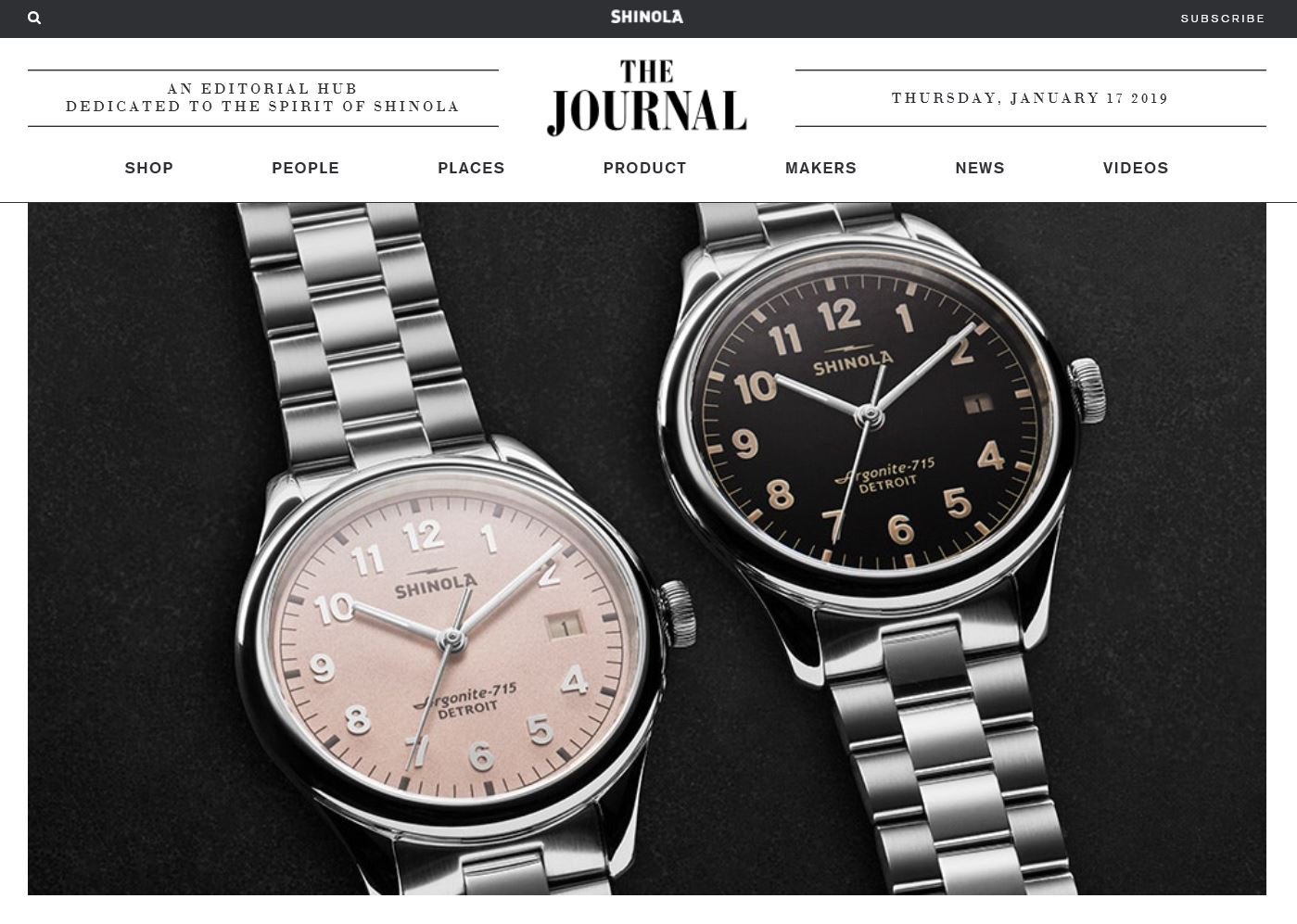
Shinola’s Marketing is a Love Letter from Detroit to the World
On the surface, Shinola‘s story is about place: the place of Detroit, Michigan.
But if you speak with the company’s employees, you’ll find that it’s actually a story about people. This includes the people that work there, the customers they invite into their home like family and the story of people all around the world who see authenticity and transparency in brands like Shinola.
If you spend enough time in Detroit, you’ll realize that underneath the sincere kindness of its citizens is a strong locals-only culture — an unwritten code among its residents to protect what they love from the creeping monolithic influence of New York, Chicago and Toronto. Shinola’s marketing team takes that secrecy and turns it on its head. They use storytelling to invite the world to experience Detroit’s unique persona through their ever-expanding product line of watches, bikes and fine leather goods.
Though they face many of the same hurdles as other retail brands, such as online shopping and changing consumer behaviors, Shinola continues to experience rapid growth. Between 2016 and 2018, their number of retail stores increased from seven to 33, not to mention their wholesale partners. Keeping authenticity alive for a brand of this size is an enormous challenge — one that the company faces head-on through their highly personalized internal marketing and unyielding trust in employees and stakeholders.
Shinola is part of a growing trend of companies that are taking their marketing back from the agencies, as their experience outsourcing it has always fallen short of their ambitious vision. After witnessing Shinola’s process first-hand (and tracking their incredible growth over the last few years), it’s not hard to see why the company prefers to keep things close to home.

A Shinola Runwell 41mm watch. Photo: Adam Simmons, Flickr
After my tour of the factory, I sat down with Alex Drinker, VP of Marketing, and Alexandra Zagata, Copy Manager, to learn more about how their team brings their story to life through in-house marketing efforts such as their editorial hub, The Journal.
Pressboard: Tell us a bit about what attracted you to Shinola.
Alex Drinker: One of the things that’s always appealing to me as a marketer is being able to kind of take a peek behind the curtain and really understand how products are made. A lot of the products that I had previously been working on in my career, you weren’t able to do that, because they were made overseas or they were made in a factory you didn’t even know how to get into, or the brands themselves didn’t want to show you how the things were made.
My first visit to Shinola, we walked through the factory much like you did, and they stopped every person along the way and had them tell me what they were doing along the way. And there was no hidden agenda, there was no covering up of any stories they didn’t want you to tell. It was this open, transparent organization where everyone was super collaborative. All the people here are really like family. I mean like, we all interact together in way that I’ve never experienced with any other company of our size.
Why is it important for you to build that trust with employees and customers?
Drinker: You know, I think it has to do with our founder’s belief that everybody should have an opportunity to play a role in this company’s mission. But also, people come here, they work here, and they like it — and they recommend it to their family members. We would much rather hire someone’s family member [than a stranger].
We’ve tested out a number of agencies over the years to try to figure out how to tell our story, and where we always come back to is that we can probably tell it better than anybody else.
We’re a very flat organization: one idea, no matter what level the employee is at, is just as good as another person’s idea. If you go in any of our stores, we really give people a fair amount of freedom to be who they are. You won’t see everybody dressed the same, you won’t see them talking about the product the same. There’s no script that they go through to figure it out. It’s really just giving them the freedom to tell our story in their own way.
There are no questions that we refuse to answer about how things are made, or where they come from, or how our people make them, or the conditions in which they work or how we try to pay people double minimum wage. It’s an effort for us to try to create a life for people that is better than other manufacturing jobs.

A peek inside Shinola’s factory. Photo: Shawn Ragell
How does transparency play a role in the content produced for The Journal?
Drinker: We’ve tested out a number of agencies over the years to try to figure out how to tell our story, and where we always come back to is that we can probably tell it better than anybody else. If you look at all of our imagery on the walls here, it’s all our employees. We don’t tend to hire a bunch of models to try to represent something that we’re not.
I don’t come to Alexandra and say, “Here, write this piece, write that piece.” One of the pieces that she recently did was how to build a watch movement, and she went up there [to the assembly floor] and just did it. Even down to the writing of the guides to how to set your timepiece or how it works — unless you have done it, you can’t really write about it in a way that makes sense. So, you have to learn how to make it before you can write about it.
What customers nowadays (especially our customers) want is just the acknowledgment that they’re part of the story.
Alexandra Zagata: We say our timepieces are assembled and people think, “Oh, you snap two things together, and it’s done.” I was just blown away by how long the process is, and how detailed. It takes a long time for your hand to actually to get it right, when you’re training on how to do it. Just meeting the people upstairs [in the manufacturing facility] and seeing the level of pride that they have in being able to accomplish that, because it’s not easy, you know? That sort of storytelling I think really connects with people.
Drinker: But we also take storytelling to another level where we have a passionate group of customers and we call them “The Foundry.” We just recently told a story about Henry Struckel, one of our foundry members who comes here every year on his birthday and tours the factory and meets with our executive team and some of the customer service reps he loves. He has over nine of our watches. We got him a birthday cake and we talked.
That’s what makes this brand a lot stickier than other brands that I’ve ever been a part of, is that we are very inclusive. Every single watch that gets shipped out of Detroit has a handwritten thank-you note on it. Our founder still writes as many handwritten thank-you notes to customers as he can.
As a company of this scale, how do you ensure that you maintain a level of intimacy with customers?
Drinker: I think that’s going to be our next hurdle to overcome. Because at some point, we reach this size that it’s hard to hand-write a bunch of thank-you notes. That’s where the trust comes in, because you have to allow the store associates to do some of that for you.
I would say there is a grittiness to the way we represent our brand, too… it’s just authentic, it’s honest and it’s transparent.
It’s not always about the economics of it. It’s about making the customer happy and ensuring that they feel part of the brand and taken care of. We’ve done a lot of consumer research that has told us that what customers nowadays (especially our customers) want is just the acknowledgment that they’re part of the story. Because we are a small company trying to create as many jobs as possible and create the best product at scale in the United States, people feel like they’re putting their money behind something more important than just a normal luxury good.
We interviewed one of our customers and he said he bought a watch as a gift for himself at various moments throughout his life. He’s a doctor, so he bought one when he graduated medical school. He bought another one when he finished his residency, and he bought another one when he saved his first life. We have only scratched the surface about what these time pieces mean to people who buy them. They tell a story.

The Journal is Shinola’s editorial hub.
Where do you see The Journal sitting in your sales funnel and marketing efforts?
Zagata: I look at The Journal kind of like a supporting cast member. We have this beautiful product and we just kind of use [The Journal] to help push it forward.
Our partnership with Barefoot Speakers is a good example. I was like, “Oh, you know, they’re really nice. But I wouldn’t necessarily be wanting to invest in them.” But then I interviewed Thomas Barefoot, and I found out that he had a love for music at an early age. He really wanted an electric guitar, but his family didn’t have much growing up, so he taught himself how to build one. And then I was like, “I really want these speakers.”
Drinker: It’s not necessarily this linear funnel that you think of in the traditional sense, that you learn from like ‘Marketing 101.’ You’re doing the awareness down to the acquisition. Awareness can happen at so many levels of the funnel. It takes three to four touch points of the brand to really make you convert. So that final stage, that last click, could come from an article that Alexandra wrote. Because you’ve been following the brand for a while, you see The Journal article and you’re like, “Oh my God, I have to have that.”
If you were to give advice to other marketers hoping to make it in this luxury retail space, what would it be?
Drinker: Everybody knows the traditional tactics of reaching audiences. You can go through traditional media, or you can go through a lot of performance media that everybody is focused on. A lot of these brands that have these big marketing budgets are just kind of running the same old play. But for us, the design and the creativity that happens within these walls is really important. The images that we put out there are, I would say, created by the people who have been in this company for a while, and are able to tell the story in a way that is really meaningful and authentic.
There are no questions that we refuse to answer about how things are made, or where they come from, or how our people make them, or the conditions in which they work.
I think we have another level of authenticity in the way we tell our story because of the design-minded folks in this building. The creative team certainly leads the way in how this brand is represented, both from a design perspective and how we market ourselves. Because we have all that creative control in-house, it’s a way that we tell our story in a unique way.
I would say there is a grittiness to the way we represent our brand, too, so it doesn’t always need to be highly polished. It’s just authentic, it’s honest and it’s transparent. Adding in the fact that we really don’t take ourselves that seriously makes people gravitate towards our brand.
Zagata: I think that’s what customers are craving. Instead of this perfect, nice little bow on it, you communicate with them in a way that’s like a friend. It’s not an arrogant luxury, it’s a proud luxury. People are proud to wear it. They work really hard and they put their money away in order to buy one of our products because they believe in it so much.
Get your Content Marketing Fix
Sign up to receive tips on storytelling and much more.
We promise to respect your inbox.


